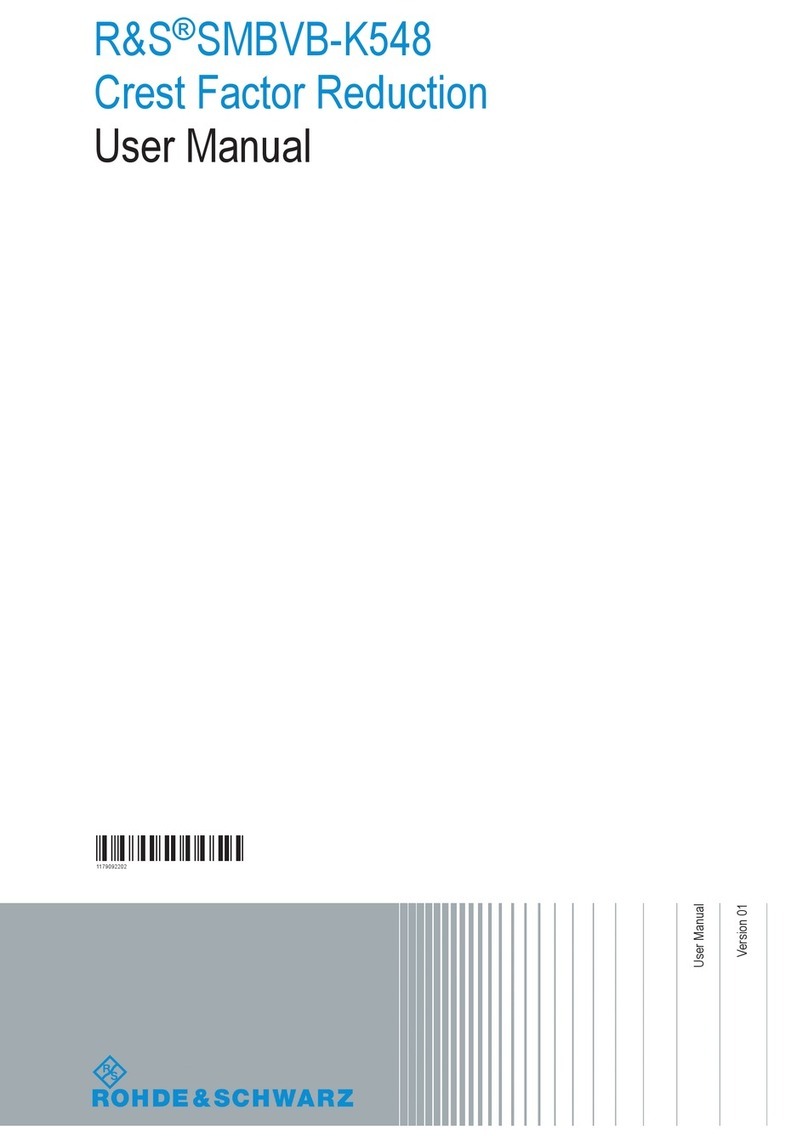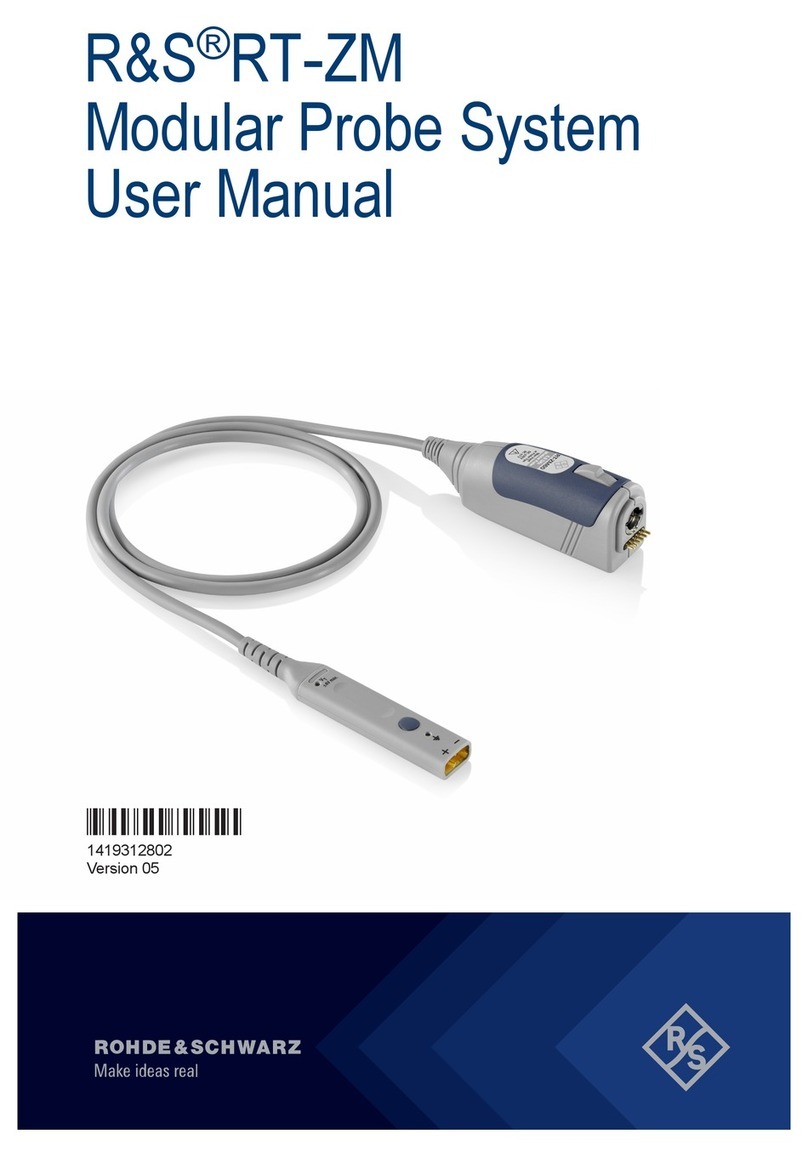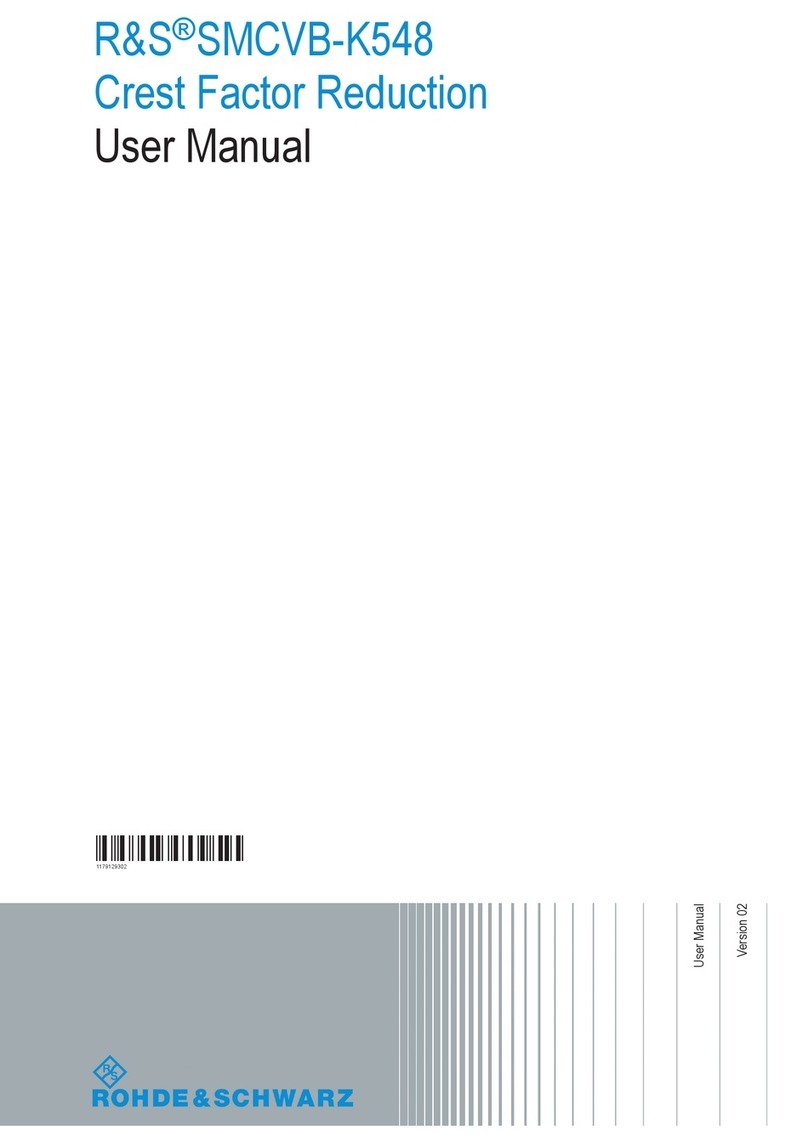
Working with R&S ZN-Z15x
R&S®ZN-Z15x
10User Manual 1337.5963.02 ─ 04
Blinking orange Data transfer between the calibration unit and the network analyzer. Do not
disconnect the USB cable.
Blinking blue Calibration in progress. Do not disconnect the USB cable.
4.3 Performing an automatic calibration
Once the USB connection between calibration unit and network analyzer has
been established, an automatic calibration can be performed as follows:
1. Start the automatic calibration function of your network analyzer.
2. Configure the automatic calibration. In particular:
a) Select the test ports to calibrate, and the desired calibration type.
b) Select the appropriate R&S ZN-Z15x model and characterization.
c) Configure the required RF port assignments between analyzer and calibra-
tion unit.
3. For each RF port assignment:
a) Connect the calibration unit ports to the test ports of the network analyzer,
as depicted in the analyzer GUI.
b) Start the calibration data acquisition.
4. Disconnect the RF ports of the calibration unit.
Wear a grounded wrist strap during steps 3 and 4 (see "Preventing electro-
static discharge (ESD)" on page 7).
Accuracy considerations
To ensure an accurate calibration, please observe the following items:
●Do not use adaptors between the calibration unit and the test ports.
●After connecting the unit to the USB port, allow for a sufficient warm-up time
(see data sheet) before starting the calibration.
●To ensure best accuracy, the analyzer automatically reduces the source power
to –10 dBm. If the test setup contains a large attenuation, deactivate Auto-
matic Power Reduction for Calibration Unit in the Calibration tab of the Sys-
tem Configuration dialog and ensure an input power of –10 dBm at the ports
of the calibration unit (please also refer to the data sheet).
Performing an automatic calibration






























